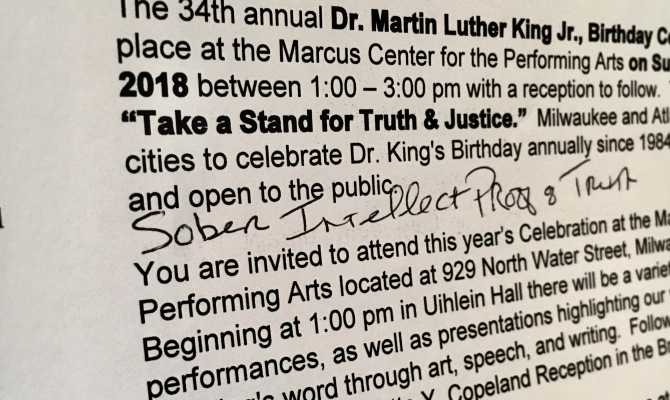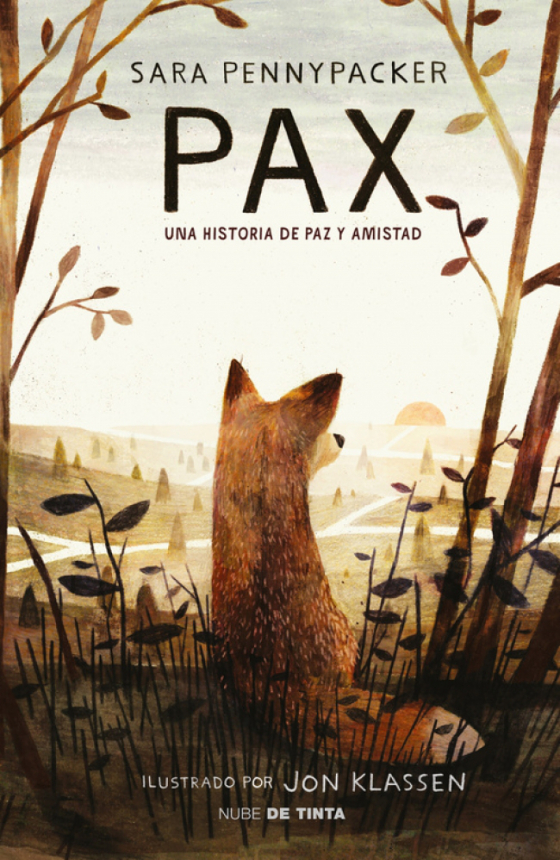I suppose up to this point, all of my art could be considered part of a large “work in progress.” I’ve been continually learning, continually growing, and I hope, continually improving my abilities in drawing and in painting.
It’s been fun to try many different things, to learn new techniques, to occasionally step outside of the box I’ve built around me. That box has identified me as an artist-in-training, and it’s been a very comfortable fit. In a way, I think we all have that box surrounding us, no matter how proficient we become in art. The process of learning never ceases. There’s always something new and different waiting to be discovered and possibly incorporated into our work.
Boxes, though, can be limiting, and my little box kept me safely ensconced in familiar places. Over the last year — I first began oil painting in November 2016 — I gradually developed my own methods of approaching a painting.
- Use acrylic to tone the canvas — usually a coral hue, sometimes a pale blue, sometimes lavender
- Use graphite to block in the major elements of the composition
- Use an oil slightly darker than the toned canvas and “draw” the elements with a fine brush
- Underpaint the essential elements with “core” colors
- Gradually bring in light and shadows through use of lighter hues and darker shades.
- Step back…and start tweaking.
Now, that process worked fairly well for me. It allowed me to move beyond my very basic — and very boring — landscapes, to more detailed paintings like my “stone bridge“.
I still sensed there was much, much, more I needed to learn. I was developing some “artistic sensibility” but not to the degree I wanted. I was still in a sort of “step-by-step” mode. Do this first. Next, do this. Follow the process from beginning to end.
The resulting paintings — like my stone bridge or my recent river scenes — showed a marked improvement over the childish-looking paintings I had previously done. But they still lacked something. They weren’t living, breathing scenes. They were just pictures on the wall.
Now, that’s beginning to change, and I have to say that this “process of change” is a bit scary. Sometimes I nearly break down in tears and frustration and ask myself, “What do you think you’re doing?” At other times, I step back and see a painting I’m working on with a new sort of artistic vision. I’m on a wildly delirious roller coaster ride — loving what I’m doing one moment, hating it all the next. I go from high to low minute by minute, and despite all the trepidation I feel, I’ve never before been so excited about my art.
This recent leap forward — I’m assuming I’m moving in a forward direction — came when I signed up for a free trial membership with Bill Inman. I patiently watched most of one video and shook my head. His teaching method — such as it is — consists of talking to the viewer as he paints. He puts paint here, there, and everywhere — with little, if any, explanation as to why he’s doing it. He mixes paint around on his palette and rambles on a bit about warm and cool, and all the while there’s this senseless jumble of paint on his canvas. As I watched, I knew that he obviously knew what he was doing, but I didn’t have a clue. No way could I imitate or “follow along”. Now and then he’d say, “Oh, I shouldn’t have done that,” and he’d figure out a way to “fix” whatever was wrong. Oh, dear! The last thing I want to do is repeat somebody else’s mistakes!
I didn’t like this method. I wanted to run back to my safe little “step by step” approach and forget I’d ever heard of Bill Inman. In fact, I was beginning to wish I’d never even heard of oil painting. Obviously I was never going to figure out what to do or how to do it. At that point, I was ready to cry.
But then this little pop-up appeared, offering me a ridiculously low price on a monthly membership — with the option to cancel at any time. I plead temporary insanity. That’s the only way it could have happened. I clicked. I agreed. I sent money via Paypal.
Immediately I regretted it. I couldn’t learn anything from just watching an artist! “I’m not ready for this,” I told myself — already rehearsing what I would say when I emailed Bill Inman to cancel and request a refund. “I’m still at a point where I need more guidance,” I would tell him.
Oh, yes, I would tell him exactly that, I decided, but I since I’d already paid for the first month, why not watch a few more videos before I cancelled? Finding time right now is difficult — another reason why I should certainly cancel — but I managed to squeeze in time to re-watch the first video, and maybe even try to follow along.
Ha! No way. I turned off the computer more frustrated than before. And then, that insane demon possessed me again. Bill Inman has a Facebook group — for members only. I was invited to check it out. But why? If I didn’t plan to continue the membership, why bother to join the Facebook group? No idea why, but I clicked, I joined, I was accepted.
What I saw in the group blew me away! Oh, my goodness, how talented these artists are! I cringed. Yes, this confirmed what I had already suspected. I was in way over my head. The paintings I saw were so far out of my league, I felt like a beginning T-ball player trying to compete in the World Series.
What was I doing! I broke down again, shut off the computer, and very nearly sent that cancellation notice. Instead, I went to bed and after a restless night with little sleep, I got up the next day determined to at least give it a good try before I quit.
I logged in to my “Monthly Membership” program and pulled up another video. This one was even worse. More wild splotches of color, huge brush strokes, seemingly random lines and vague shapes.
Here, see for yourself!
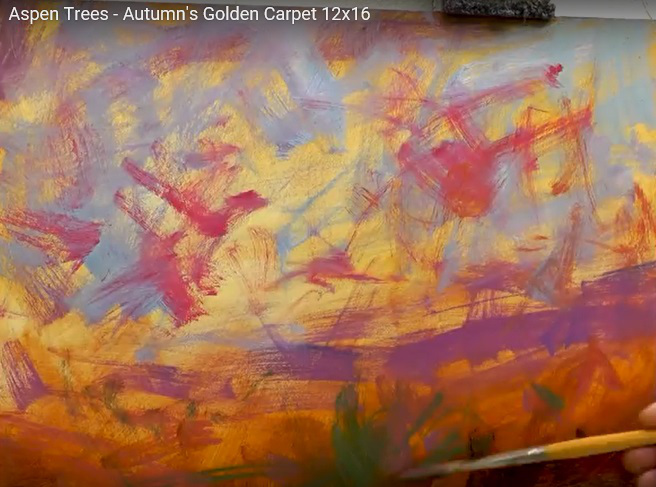
Does this, in any way, look like “Aspen Trees”? Does this look like anything? Not to me. But despite my doubts, my frustration, my sense of impending failure, I dutifully set up my own canvas and dabbed different colors here and there — a laughable attempt at imitating what I saw on the screen.
When my husband came home and glanced toward my easel, I actually apologized. “I’m learning new techniques,” I told him. “It’s not finished. It’s not supposed to look like anything yet.” At least I’d succeeded in that! Bill Inman’s work didn’t look like anything recognizable; neither did mine.
The next day, to my surprise, I found myself excited about painting. I glanced at the easel each time I walked by. From a distance — especially if I squinted a little — I could sense something happening on the canvas. I could feel something there. I just couldn’t quite see it yet. Even so, I could imagine different things that might be there.
I started thinking about concepts like balance, harmony, repetition. When it came time to paint, I grabbed different brushes and put a few marks here, a few more there. Why? Because those marks added something. I guess that’s why I put them in. Different parts of the jumbled colors seem to say, “A little more light here,” or “Give me a touch of green”. I listened, I responded.
As I watched more of the lesson, my excitement grew — not because of what I was seeing Bill Inman do, but because I was seeing what I needed to do. Or, at least, what I wanted to do.
Gradually the beginning of an actual scene appeared. When my husband came home, I asked him to step back and look. “It’s far from finished,” I quickly explained, “but can you see a painting starting to emerge?”
He had no idea what I was talking about — until he looked. He looked. He saw. Yes, something is emerging from the chaos.
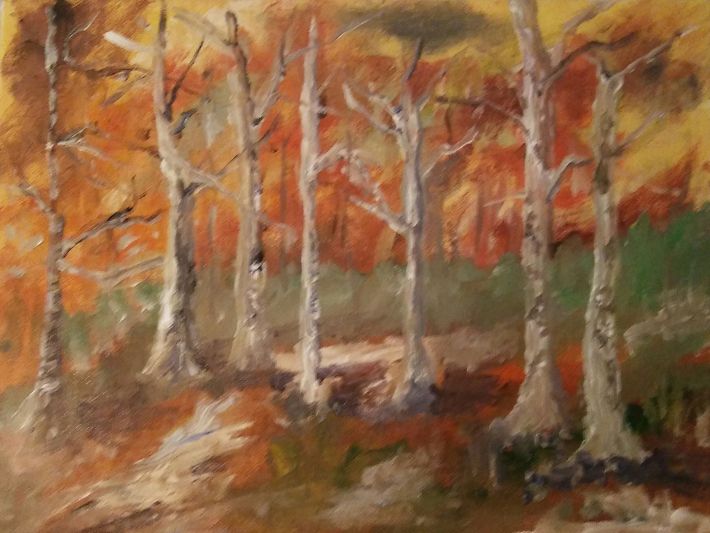
It’s still a mess, and it bears little resemblance to Bill Inman’s painting, but that’s how it should be. This is my painting. I’m the one who’s decided where and how to place each stroke. I’m the one mixing different colors on my palette. I’m the one choosing which brush to use, what sort of stroke to make, and yes, it’s still a mess. But it’s my mess!
And it’s a mess that suggests that something is lurking there. Maybe all those blobs and blotches can become what art really is — an illusion that captures the essence of a scene.
In the end, my efforts might go for naught. I might ruin this canvas. I might even cancel my monthly membership with Bill Inman Art as I’ve threatened to do so often since I enrolled. But for now, for this precious moment, I’m going to enjoy what I’ve done so far. This painting — although still a work in progress — represents a huge step for me in learning to trust myself and let myself be an artist.
I hope you can see a little of the possibility I feel in this painting. For me, that’s the most beautiful thing about this mess. I can truly feel something here. My painting is living; it’s breathing; it’s coming to life.
UPDATE: I finished this painting today. I didn’t do a lot more to it. Mostly I worked on making the pathway more distinct, added a suggestion of fallen leaves along the edges of the path, and I put a few more trees in the background. Here’s my finished painting:
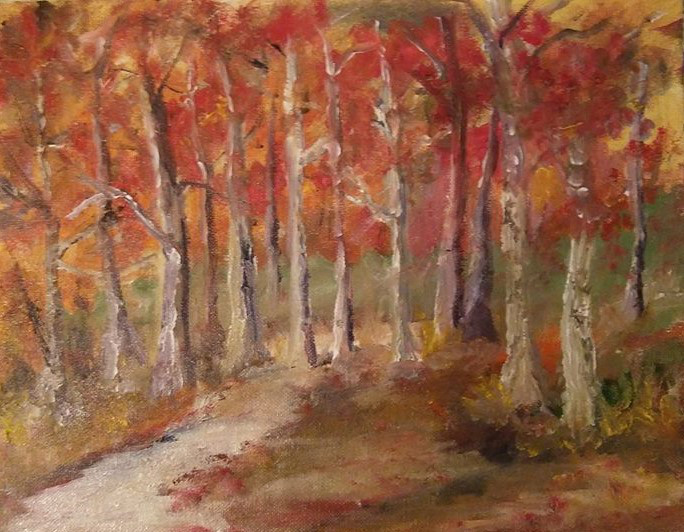
Some things I like; some things I could have done better. I learned a lot while doing this painting, and even though I’m not completely satisfied with it, I am pleased. I’m one step closer now to the artist I want to be.
Advertisements Share this: